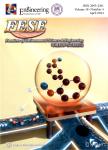Differences in distributions, assembly mechanisms, and putative interactions of AOB and NOB at a large spatial scale
作者机构:College of Life and Environmental SciencesMinzu University of ChinaBeijing 100081China Environmental Simulation and Pollution Control State Key Joint LaboratorySchool of EnvironmentTsinghua UniversityBeijing 100084China Institute of Plant ProtectionBeijing Academy of Agriculture and Forestry SciencesBeijing 100097China
出 版 物:《Frontiers of Environmental Science & Engineering》 (环境科学与工程前沿(英文))
年 卷 期:2023年第17卷第10期
页 面:55-64页
核心收录:
学科分类:0710[理学-生物学] 083002[工学-环境工程] 0830[工学-环境科学与工程(可授工学、理学、农学学位)] 08[工学] 0703[理学-化学]
基 金:supported by the major project of the National Natural Science Foundation of China(No.52193268013) the Fundamental Research Funds for the Central Universities(No.2022QNPY56).
主 题:Activated sludge Spatial distributions Microbial assembly Co-occurrence patterns Nitrifying bacteria
摘 要:Ammonia-oxidizing bacteria (AOB) and nitrite-oxidizing bacteria (NOB) play crucial roles in removing nitrogen from sewage in wastewater treatment plants (WWTPs) to protect water resources. However, the differences in ecological properties and putative interactions of AOB and NOB in WWTPs at a large spatial scale remain unclear. Hence, 132 activated sludge (AS) samples collected from 11 cities across China were studied by utilizing 16S rRNA gene sequencing technology. Results indicated that Nitrosomonas and Nitrosospira accounted for similar ratios of the AOB community and might play nearly equal roles in ammonia oxidation in AS. However, Nitrospira greatly outnumbered other NOB genera, with proportions varying from 94.7% to 99.9% of the NOB community in all WWTPs. Similar compositions and, hence, a low distance–decay turnover rate of NOB (0.035) across China were observed. This scenario might have partly resulted from the high proportions of homogenizing dispersal (~13%). Additionally, drift presented dominant roles in AOB and NOB assembling mechanisms (85.2% and 81.6% for AOB and NOB, respectively). The partial Mantel test illustrated that sludge retention time and temperature were the primary environmental factors affecting AOB and NOB communities. Network results showed that NOB played a leading role in maintaining module structures and node connections in AS. Moreover, most links between NOB and other microorganisms were positive, indicating that NOB were involved in complex symbioses with bacteria in AS.



